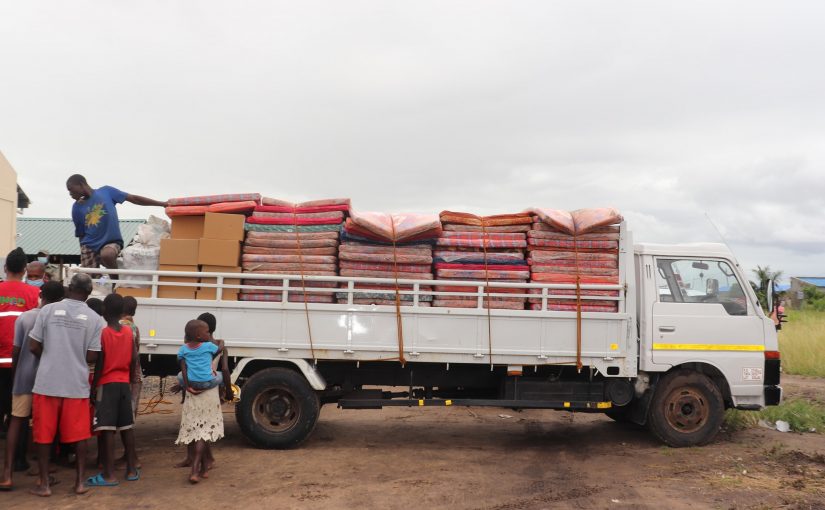Mozambique Pavilion at Expo Osaka reaches one million visitors
Rain again washes away Elisa’s home in central Mozambique – Lusa

A truck loaded with mattresses is parked outside the Ndunda Primary School in the city of Beira, on ;March 20. 2022. [Photo: Conselho Executivo Provincial de Sofala]
Three years after Cyclone Idai, Elisa Ernesto is again suffering anguish as she sees floodwaters consume her precarious house in Ndunda, on the outskirts of Beira in central Mozambique.
“We need help from the government,” she tells Lusa, describing what she experienced on Friday and Saturday during the torrential rain caused by the depression that followed Cyclone Gombe.
It rained as much in a day as it usually rains in a month, according to reports from both the population and local authorities.
“There were strong currents, and inside the house everything was full of water. There was no way to stay there. The [neighbourhood] secretaries passed by the houses asking us to go to the schools,” but “they don’t have the conditions there for us to survive,” she recounts.
Even so, the schools are the only safe haven and the place where Elisa takes her two 20-litre drums of water for the day’s needs, albeit with a heavy face and hiding her hunger.
The food she had kept at home was either washed away or became unfit for consumption.
A similar fate befell Sara Paulo, who suffered sleepless nights perched on bricks with her children, waiting for the waters to subside.
“There, in Ndunda II, we put everything in the hands of the government, because we are running out of ideas. We built a house, but the comes and destroys everything, and we go through hard times again,” she relates.
Sara Paulo has known all the recent cyclones. They all took something from her: Idai in 2019, Chalane in 2020 and Eloise in 2021.
Fifty-year-old Anita Monteiro, a long-time resident of the neighbourhood, says her house looked like it had become an island. “We’ve already asked for a bridge for the area, for security in times of flooding,” she adds.
On Saturday and Sunday, authorities had to resort to small boats to rescue some residents, like Anita.
Aristides Armando, delegate of the National Institute for Disaster Management (INGD) in the province, told Lusa that 22,000 families were affected by the floods in that part of Sofala.
There are 1,349 houses completely destroyed, and another 3,096 flooded.
“We are managing the situation” by means of three accommodation centres and “the waters are receding in almost every neighbourhood in the city,” he adds.
According to Armando, some parts of the province are still seeing high flows of the Búzi and Metuchira rivers, the result of discharges from the Mavuzi and Chicamba dams.
Between 11 and 19 March, northern and central regions of Mozambique saw heavy rain caused by Cyclone Gombe and the tropical depression that followed it.
The bad weather caused at least 59 deaths and injured 82 persons (provisional figures), especially in the northern provinces of Zambézia and Nampula, in many cases following the collapse of mud-and-thatch houses.
Mozambique faces severe storms every year during the cyclonic/rainy season, which runs from October to April.












Leave a Reply
Be the First to Comment!
You must be logged in to post a comment.
You must be logged in to post a comment.